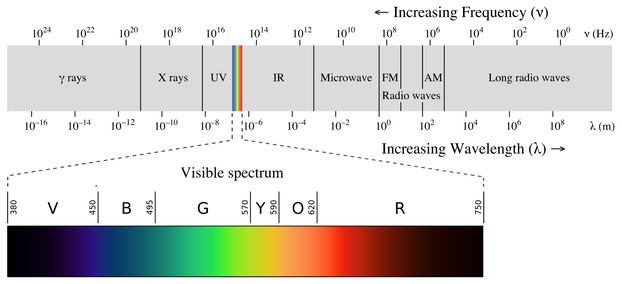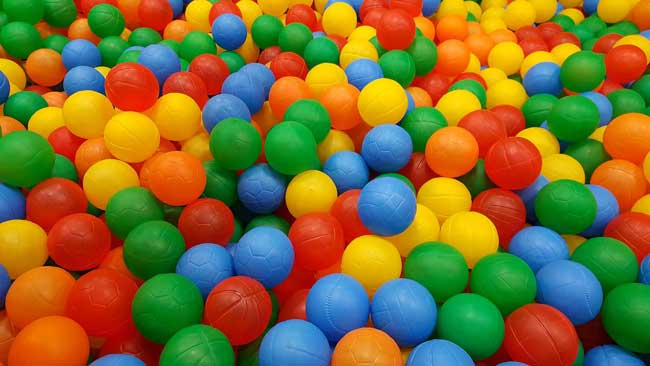 Is it dark? Just light up a lamp, and you have a source of light to kick-away the darkness. Light is one of the fundamental needs of humans and every living thing (almost!). We can find our ways to home, schools, and offices because of light. Just think a bit, what will happens if the light suddenly goes away? You will be amazed that we cannot survive without light. So, what is that light?
Is it dark? Just light up a lamp, and you have a source of light to kick-away the darkness. Light is one of the fundamental needs of humans and every living thing (almost!). We can find our ways to home, schools, and offices because of light. Just think a bit, what will happens if the light suddenly goes away? You will be amazed that we cannot survive without light. So, what is that light?
What is Light?
It may be a bit complicated to understand, but let’s try to understand simply. The first thing to remember is that light isn’t made of matter, so it doesn’t have mass. It is just a form of energy (also called electromagnetic energy) that travels at a constant speed from one place to another and reflects from the objects. When it hits our eye, we see the objects from which the light is reflected or emitted.
So, do we really see light? The simple answer is NO!
We only see the effect of light that happens in our eyes. The light cause a chemical reaction in light-sensitive cells of our eyes. These reactions produce electrical signals that are transferred to the brain by the optic nerve.
Moreover, light is the small portion of the electromagnetic spectrum that our eye can detect. The other portions of electromagnetic radiation that you may be familiar are radio waves, infrared, ultraviolet, and X-rays etc. But, the human eye cannot detect these radiations. Our eyes are only sensitive to light, also called visible light.
Here is the complete electromagnetic spectrum

Notice, how much small portion is occupied by visible light spectrum.
How Fast Light Travel?
 Visible light and every radiation of electromagnetic spectrum travel at constant speed, which is 299,792,458 m/s (meter per second) or 186,000 miles/second. It only takes 1.3 seconds for the light to reach from the Moon to earth, and 8 minutes to reach from the sun.
Visible light and every radiation of electromagnetic spectrum travel at constant speed, which is 299,792,458 m/s (meter per second) or 186,000 miles/second. It only takes 1.3 seconds for the light to reach from the Moon to earth, and 8 minutes to reach from the sun.
The speed of light is the fastest known speed in our Universe, and no object with mass can reach that speed. Although, material objects can reach close to the speed of light.
The interesting part!
The laws of classical physics don’t Work anymore when objects reach near the speed of light. Then, comes Einstein’s theory of relativity to rescue us. This theory describes what happens when things reach closer to the speed of light.
How Do We See Colors?
The visible light not only allows us to see objects, but it also allows us to see the object in a wide variety of colors. It is because the visible light starts from the wavelength of 700nm and ends at 400nm. The colors that we can see a change from 700nm (dark red color) to 400nm (dark blue color).
Here is the complete spectrum of visible light.
The colors we see may be the single wavelengths of light or the mixture of several wavelengths. For example, the sunlight is the mixture of all wavelengths of light and we see it as white light. Just check the light spectrum image above and notice that there is no white color, it just a mixture of colors.
You can also check out our experiment: How to Make Rainbow on Paper, to confirm that sunlight is the mixture of visible colors.
Why Objects Have Different Colors?
 As you know from the above discussion that, white light is the mixture of colors. So, when this white light falls on an object, it absorbs some colors of light and reflects the remaining colors to the surrounding. When our eyes catch that reflected light, it sees the object’s color that it reflected.
As you know from the above discussion that, white light is the mixture of colors. So, when this white light falls on an object, it absorbs some colors of light and reflects the remaining colors to the surrounding. When our eyes catch that reflected light, it sees the object’s color that it reflected.
For example, when the light hits the green box, it absorbs all the colors of light and reflects only green color. As a result, we see it as green. Similarly, black colored objects absorb all the colors of light so we see it as black. Furthermore, the white colored objects don’t absorb any color at all, so we see them as white.
There are some materials which don’t absorb light or reflect them. As a result, we can see through these objects. These objects are called transparent objects, e.g. glass.
How Light Helps Us
The first benefit that will come to everyone’s mind is that light helps us and every organism on earth to see objects and the environment. Besides that, there many other important benefits of light, which are:
- The heat from the sun reaches the earth as radiation. These radiations are absorbed by atmosphere and ground to maintain the temperature of our earth that is suitable for life. Without that heat, everything would be frozen like the planet, Pluto.
- Plants use sunlight in Photosynthesis to prepare food for them and generate oxygen for us.
- We use solar panels to generate electricity from light.
- We are using spectroscopic analysis of electromagnetic radiation coming from space to study the far planets, stars, and galaxies.
Fun Facts
- The speed of light reduces as it enters into a medium, like air, glass, and diamond.
- Ants can see the ultraviolet region of light, which humans can’t see.
- Ibn al-Haytham was a Muslim scientist, who first discovered that we see objects due to the light coming into our eyes. Before him, it was considered that we see because eyes emit radiations that hit surrounding objects. Ibn al-Haytham is also considered as the father of Optics (Science of light).





